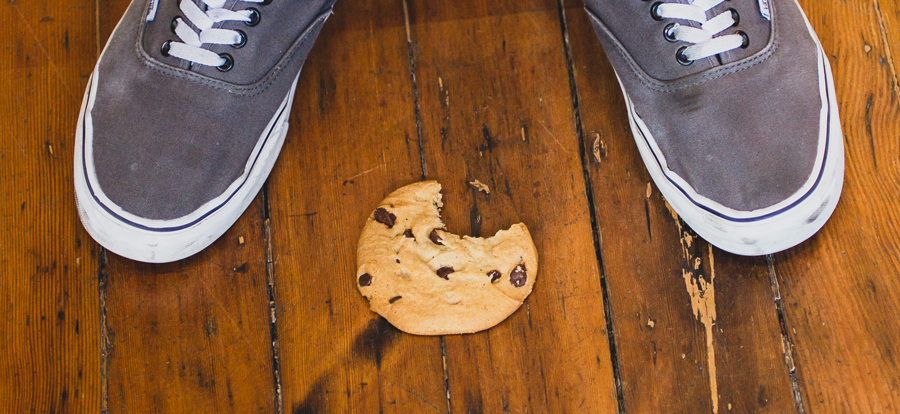Science Says ‘The Five-Second Rule’ Is OK, But Is It Really?

We’ve all heard someone shout, “Five-Second Rule!” as they witness part of their meal succumb to gravity and plummet to the floor below.
For decades, science has been trying to prove the Five-Second Rule exists. In 2003, a student participating in Hans Blaschek’s University of Illinois lab at the University of Illinois School of Agriculture, Consumer and Environmental Science reported that 70 percent of women and 56 percent of men were at least “familiar” with the Five-Second Rule.
Yet, we should know, regardless of how long food ends up on the floor, there’s going to be germs. So, why has this rule — which we use to dismiss the potential danger caused by ingesting some strain of harmful bacteria — existed for so long, and do we really think it’s true?

Science says, yes we do — and it actually might work.
A recent Rutgers University study, published in the American Society For Applied and Environmental Microbiology in September 2016 could prove why this unsanitary method of food consumption has become so widely recognized.
The study revealed that contamination rates varied depending on the food’s level of moisture and duration of contact with the surface. Rutgers University professor, Dr. Donald W. Schaffner, who is also an Extension Specialist in Food Science, authored the study.
Dr. Schaffner’s study was conducted by dropping sliced watermelon, slices of non buttered and buttered bread, and pieces of gummy candy onto stainless steel, tile, wood and carpet surfaces. After being dropped, the food was left on the surface for time intervals between less than one second up to 300 seconds.
Carpet, according to the study, was the least conducive for bacteria.
“Carpet has very low transfer rates compared with those of tile and stainless steel, whereas transfer from wood is more variable. Dr. Schaffner said in a press release. “The topography of the surface and food seem to play an important role in bacterial transfer.”
To no surprise, Dr. Schaffner found that all food will become contaminated instantly. So, even though the Five-Second Rule will not save you from contamination, there is a decreased risk depending on the surface and a food’s water content.
So, the risk of contamination is scientifically proven to be less if you drop (and eat) a Pop Tart off the counter, versus scooping up your entire Chipotle Burrito Bowl from the floor — in five seconds and under.
This seems obvious, but gives the Five-Second Rule some legitimate hypothetical value.
Still, why do we continue to rationalize this type of risk when it comes to our food? Well, according to a food safety expert, it can depend on the type of food we eat, and the culture we live in.
“We’re familiar with eating foods that have been highly processed, and understand that it’s not natural,” Dr. Douglas Powell, a former food safety professor and publisher of the website BarfBlog, said in an interview with FOODBEAST.
“When food falls on the floor, we already know it’s not natural, so we disregard the risk. We just need to be smart enough to know that everything has different levels of sanitation.”
Culinary preferences change with the culture as well. In some cultures, food is consumed raw, without question, or fear of contamination.
Dr. Powell added, even though there are existing scientific studies dedicated to the Five-Second Rule — that prove its legitimacy — it does not mean it should become a standard practice.
From a food safety perspective, Dr. Powell estimates that a lot of people who abide by the Five-Second Rule may not consider the realistic dangers of contaminative stains of bacteria, such as E. Coli and Salmonella.
“It’s easy to underestimate the genetic susceptibility we have to deadly bacteria we ingest.”
Dr. Powell believes risk is a part of reality. Even something as simple as eating food off the floor has consequences. He credits the Rutgers research as legitimate, peer-reviewed scientific analysis.
However, Powell added, “Academics should not be to preach, but to provide information,” thus stressing the role of academic studies is to prove a hypothesis and make discoveries.






















